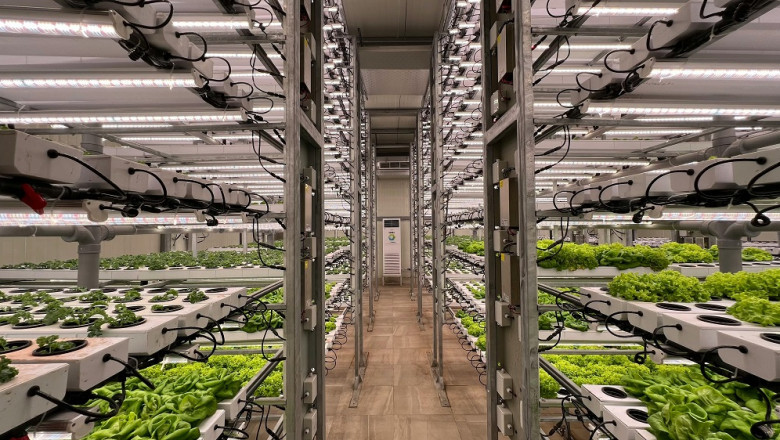views
Greenhouses have always given growers the power to extend the growing season, protect plants from harsh weather, and create ideal growing environments. But even the best greenhouse can't control one critical factor — sunlight. Cloudy days, short winter daylight hours, and unpredictable weather can all reduce the light your plants receive. That's where LED grow lights for greenhouses are transforming the game.
In this post, we’ll explore how LED grow lights are helping greenhouse growers take full control of their lighting needs, boost yields and grow healthier plants year-round.
Why Supplemental Light Matters in Greenhouses
Greenhouses rely heavily on natural sunlight, but that light can be inconsistent. During the winter or in regions with frequent cloud cover, plants may not get enough light to photosynthesize properly. Even short dips in light levels can slow growth or impact flowering and fruit production.
Adding supplemental lighting, especially LED grow lights, helps maintain consistent light levels. This ensures your plants keep growing, even when the weather doesn’t cooperate.
The Rise of LED Grow Lights in Greenhouses
Traditionally, greenhouses used high-pressure sodium (HPS) or fluorescent lights. While these older lighting technologies work, they come with problems:
-
High energy use
-
Excess heat production
-
Shorter lifespan
-
Limited spectrum control
LED grow lights have quickly become the preferred choice in modern greenhouse growing due to several key advantages:
1. Energy Efficiency
LEDs consume far less power than HPS or metal halide lights. This reduces your energy bills while delivering the same—or even better—light intensity. Many greenhouse growers see energy savings of 30–50% after switching to LED grow lights.
2. Low Heat Output
Unlike older lights that get extremely hot, LEDs stay cool. This means you can place them closer to plants without the risk of burning leaves. It also helps maintain a stable climate inside the greenhouse, reducing the need for extra ventilation or cooling systems.
3. Customizable Light Spectrum
One of the biggest benefits of LED grow lights is the ability to tailor the light spectrum to your plants' specific needs. Whether your crop is in the seedling, vegetative, or flowering stage, you can fine-tune red, blue, and even far-red light to encourage healthy development and maximize yield.
Some advanced LED systems even offer automated spectrum control, allowing growers to change light recipes with a simple app or control panel.
4. Longer Lifespan and Less Maintenance
High-quality LED grow lights typically last 50,000+ hours, meaning fewer replacements and less maintenance. This is especially valuable in large greenhouse setups, where swapping out lights can be time-consuming and costly.
5. Improved Plant Quality and Yield
Studies and real-world grower reports consistently show that crops grown under optimized LED lighting tend to have:
-
Faster growth rates
-
Stronger stems and healthier leaves
-
Higher fruit or flower yield
-
Better color, taste, and aroma (for herbs and produce)
By providing consistent, high-quality light, LED grow lights give your plants the energy they need to thrive—even in the darkest months of the year.
Choosing the Right LED Grow Lights for Your Greenhouse
Not all LED grow lights are the same. When shopping for greenhouse lighting, keep the following factors in mind:
-
Light Spectrum: Choose a full-spectrum LED grow light that supports all growth stages, or go for tunable-spectrum options if you want more control.
-
PPFD and DLI Needs: Consider how much light your specific crop requires. Look for lights that provide the right Photosynthetic Photon Flux Density (PPFD) to meet your Daily Light Integral (DLI) goals.
-
Mounting Height and Coverage: Make sure the light fits your greenhouse setup, whether you're lighting tall crops or hanging lights high above planting tables.
-
Durability and IP Rating: Look for LED grow lights with a good IP rating (like IP65) to ensure they can handle the humidity and moisture of a greenhouse environment.
Final Thoughts: Growers Are Making the Switch!
As the cost of LED technology continues to drop and efficiency improves, more greenhouse growers are making the switch to LED grow lights. Whether you're growing tomatoes, herbs, flowers, or cannabis, the ability to provide sunlight on demand means better crops, more control, and higher profits.
If you're serious about maximizing your greenhouse's potential, investing in LED grow lighting isn’t just smart—it’s essential. To help you get started, explore our complete guide to the best LED grow lights for greenhouses and find the perfect fit for your setup.






















Comments
0 comment